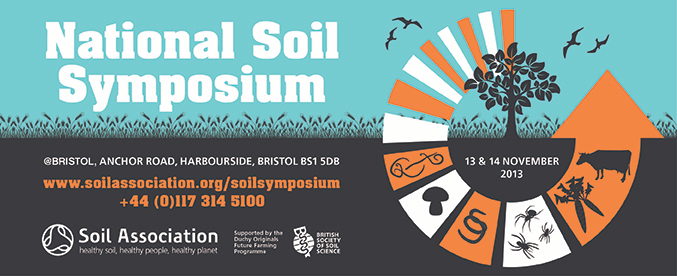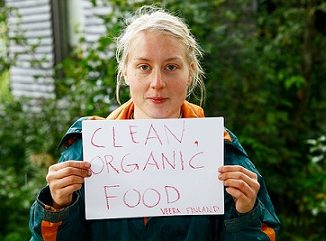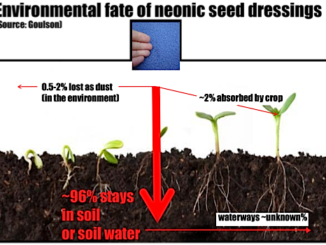The Soil Association, UK organic certification body and also “the UK’s leading membership charity campaigning for healthy, humane and sustainable food, farming and land use and environmental charity”, have organised a Soil Symposium, which finishes today. To highlight this important event, and key messages about agro-ecological farming methods and soil, Louise Payton, Policy Officer at the Soil Association, has written this special guest post.
7 ways to save our tired soils
Franklin D. Roosevelt stated in 1936 that ‘The history of every Nation is eventually written in the way in which it cares for its soil’. In fact many great civilisations have crumbled alongside their soils, degraded through years of cultivation to the point where food production was not viable.
Sadly, we are still making the same mistakes. Traditional farmers found that their soils grew ‘tired’ after years of cultivation and the solution was usually to move on. In recent decades as science has progressed, we began to view soil as an inert matrix holding the key nutrients required by plants, and we have replenished those nutrients lost with chemical fertilisers.
But healthy soils are more than a matrix supporting a nutrient soup, they are very much alive.
Failing to recognise this is having consequences. Top soil is so slow to replenish, it is essentially a finite resource – but it is being lost globally. Whilst some soils are slow to degrade, others are degrading rapidly, particularly in the dryer areas of the world. So far, 30% of the world’s croplands have become unproductive, with the area of soil degradation in the last 40 years amounting to an area larger than the United States and Mexico combined.
As such, we are increasingly realising that we need to pay more attention to the biology of soil. Soil life affects nutrient availability with or without chemical fertilisers, as well as how easily soils can erode and deal with floods and droughts. Healthy soils are those which have a diversity of bacteria, fungi and other organisms such as earthworms. These aerate and break down organic matter, an essential element of healthy soils, filtering and recycling nutrients and making these available to plants through complex symbiotic interactions which we are only just beginning to understand. Whilst plants are traditionally seen to absorb their nutrients in a dissolved form in water, nutrients provided through these beneficial relationships are filtered, reducing imbalances and toxins, and include valuable, yet insoluble trace elements which may otherwise be inaccessible.
Unhealthy soils, with poor organic content and deprived soil communities, therefore have reduced plant health and poor soil structure, eroding and drying out easily with falls in yield despite chemical fertilisation. Unhealthy soils therefore lead, inevitably, to unhealthy people.
The founder of the Soil Association recognised this link between soil health and human health over sixty years ago and the response was to develop what was then, and still is now, a radical, yet practical and workable method of farming. This is one which protects and nurtures the soil and the life within it by putting it at the centre of the farming system.
There are many examples in which innovative organic farming methods can be used to improve soil health:
Act rapidly to build organic matter in soils
It takes as much as 500 years for topsoil to grow by 2cm so we need to grow our soils through innovative management techniques.
- Organic matter is an essential element of soils. Apply small doses of organic matter over time to encourage soil biodiversity to develop and flourish.
- ‘Mob stocking’ (wherea large herd of livestock is confined to an area to intensively graze it) has also been shown to build organic matter very fast.
- Encourage soil building organisms by inoculating with microbial ‘stews’
- Stop straw going for power generation; we shouldn’t be burning it when we need it recycled back into soil organic matter.
- Experiment on infertile soils. There are projects like Sekem, in Egypt, which have shown how even desert can be turned into productive farmland.
Protect soils using continuous plant cover and trees
Plant roots protect soil structure by holding it together and allowing air to penetrate in spaces around roots. They also encourage healthier soil communities through plant-fungal interactions.
- Stop clear felling old growth forest on vulnerable soils, as trees protect soil, store carbon (organic matter) and help prevent salination and erosion.
- Develop more agroforestry systems (mixtures of productive trees or shrubs and crops), so we have the yield, biodiversity and soil protection benefits of many more trees in our landscape
- Restoring farmland to grassland rapidly builds up soils. Rotational systems that include temporary grass leys also help build soil organic matter.
- Move towards mixed and organic farming so that you have sources of organic matter onsite.
Examine the impact chemical inputs have on soil life
- Encourage more research into how different chemicals and fertilisers affect soil biology, including in combination. Non organic farmers need to know whether and how severely their inputs are hampering soil health, so they can choose less damaging inputs
Reduce soil compaction which impacts soil structure and soil biology
- Shrink our tractors, get ground pressures lower, reduce machinery passes and use GPS tracking so that we run on 5% of soil rather than the average 85% each year.
- Start experimenting with growing perennial crops, as well as more trees, to reduce the amount of ploughing and sowing needed.
Reduce the chances of erosion
- Discourage crops which tend to be associated with increased erosion risk. For example maize needs loads of fertiliser and herbicide, is wide rowed and harvested late, meaning that erosion can be a problem, especially on sloping land.
Help mitigate and adapt against the effect of climate change
- A fully functioning soil reduces the risk of floods and protects underground water supplies by neutralising or filtering out potential pollutants and storing as much as 3750 tonnes of water per hectare.
- Soils with flourishing soil biology can cope better with rising temperatures and aridity and prevent nutrient imbalances.
- The International Panel on Climate Change states that 89% of agricultural emissions can be mitigated by improving soil carbon levels. Research shows that organic farming is the best way in which to do this.
Lobby for organic farming to be recognised by government policy
Soil health is being increasingly recognised in Europe, but the much anticipated EU Soil Directive is still opposed by some Member States, including the UK.
- The European Union should do more to ensure all Member States give similar levels of encouragement to farming systems, like organic, that help conserve and build healthy soils – at the moment organic farmers in the UK receive the lowest levels of support in the EU, and that support varies widely among Member States.
- We are currently within a round of Common Agricultural Policy (CAP) reform. We think that all payments should go to farming which benefits people and planet. A key part of this is support for systems which protect the soil, such as organic farming.






WE NEED SOIL FOR VEGETABLES AND FRUIT
We must protect our soil for the next generation
Organic has to be the way forward, please support organic growing and selling X